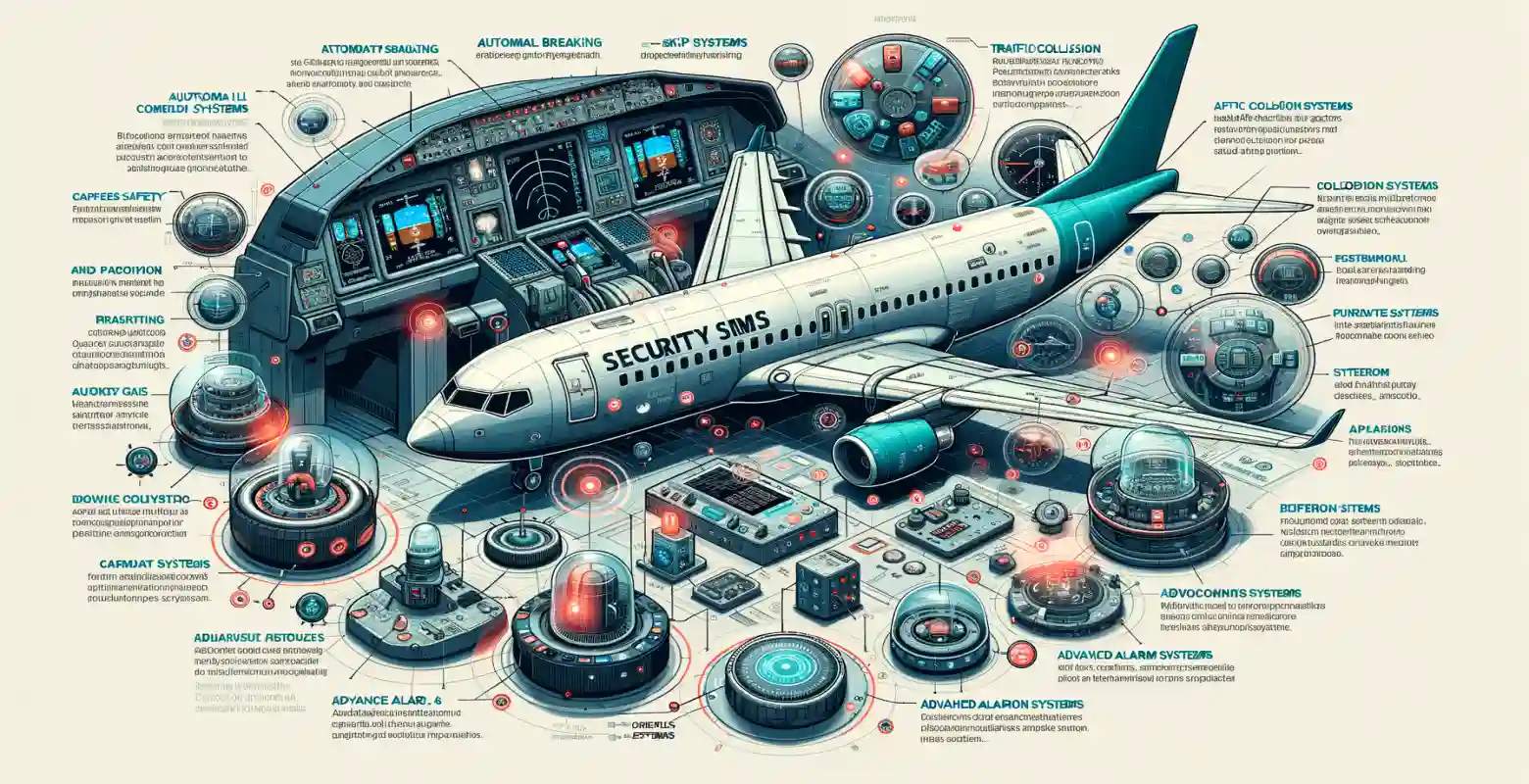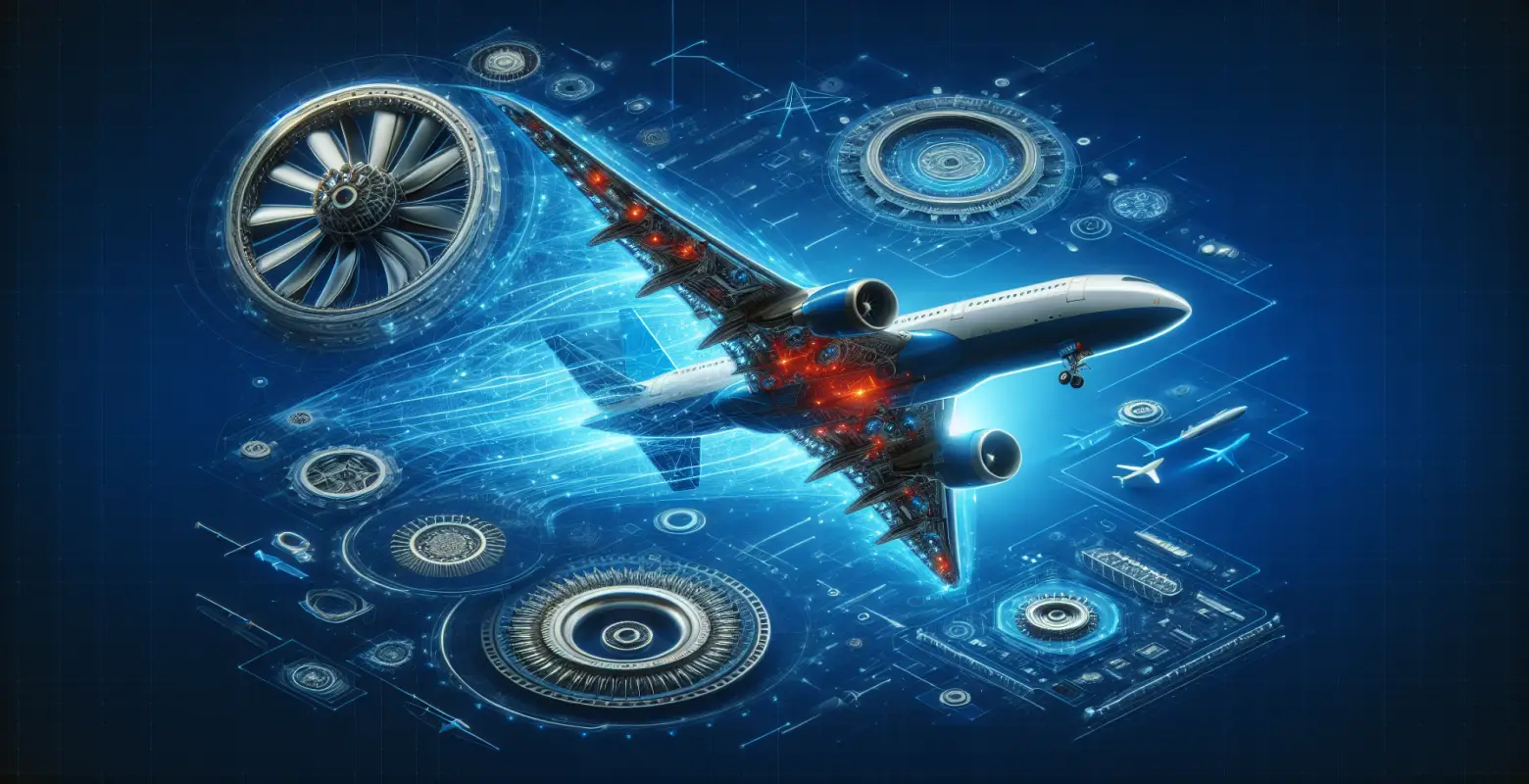Security systems in modern aircraft - how do they work?
Introduction
Aviation safety is a topic of crucial importance for both passengers and the entire aviation industry. Modern aircraft are equipped with advanced safety systems aimed at minimizing risks and ensuring a safe journey. In the era of increasingly sophisticated technologies, these systems are constantly being improved, making aviation one of the safest modes of transportation. In this article, we will take a closer look at how safety systems work in modern aircraft, what technologies are used, and what challenges and prospects lie ahead for the aviation industry.
Basic Safety Systems in Aircraft
Modern aircraft are equipped with many safety systems that operate autonomously as well as in cooperation with the crew. One of the key systems is the Flight Management System (FMS), which integrates various flight data and assists pilots in navigation and flight management. The FMS cooperates with the autopilot, which can control the aircraft in different flight phases. Another important element is the Traffic Collision Avoidance System (TCAS), which monitors air traffic and warns pilots of potential collisions with other aircraft.
Warning and Avoidance Systems
Warning and avoidance systems are crucial for ensuring safety in aviation. In addition to the aforementioned TCAS, modern aircraft are equipped with Terrain Awareness and Warning Systems (TAWS), which inform the pilot about the proximity of the ground or other obstacles. TAWS utilizes data from radars and GPS systems to provide current information about the aircraft's surroundings. Another significant system is the Ground Proximity Warning System (GPWS), which alerts pilots to the danger of approaching the ground, particularly important in challenging weather conditions.
Aircraft Health Monitoring Systems
Advanced aircraft health monitoring systems allow for real-time tracking of various technical parameters. Diagnostic systems collect data on the functioning of engines, hydraulic and electrical systems, and the aircraft's structure. This enables quick identification and repair of malfunctions. In terms of monitoring, flight data recorders and cockpit voice recorders - the black boxes - are also crucial, providing invaluable information in the event of aviation incidents.
Automation Systems and Their Impact on Safety
Automation in aviation significantly reduces the workload on pilots and enhances safety. The Autopilot is one of the key elements of automation, allowing for precise aircraft control along a planned route. This enables pilots to focus on monitoring systems and responding to potential threats. Automation systems also assist in fuel management, crucial for flight optimization and increasing the aircraft's range.
Challenges and Prospects for Safety Systems Development
Despite technological advancements, the aviation industry faces numerous challenges. One of them is Cybersecurity. With the increasing digitization of aircraft, protection against hackers' attacks becomes a priority. Another challenge is the integration of new technologies, such as Artificial Intelligence, which can support decision-making and diagnostic systems. In the future, we can expect further development of autonomous systems, further enhancing flight safety.
Summary
Safety systems in modern aircraft are highly advanced and play a crucial role in ensuring passengers' safety. Through the integration of various technologies such as FMS, TCAS, TAWS, and GPWS, it is possible not only to avoid threats but also to efficiently manage flights. Automation and aircraft health monitoring allow for the swift detection and repair of malfunctions. In the future, the development of safety systems will focus on integrating new technologies and providing an even higher level of protection against threats, including cyberattacks. The topic of aviation safety remains crucial, and its development brings benefits not only in terms of safer flights but also more efficient and sustainable air transport.






Number of comments: 0